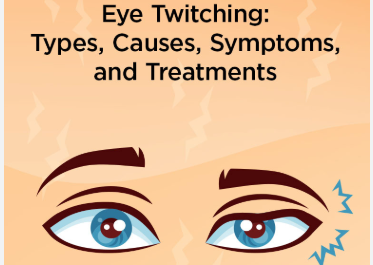Introduction
Fibromyalgia is a complex chronic disorder known for causing widespread pain, fatigue, and cognitive dysfunction. However, many individuals with fibromyalgia also experience coordination problems, making everyday activities more challenging. Poor coordination, clumsiness, and difficulty with fine motor skills can significantly impact a person’s mobility, balance, and ability to perform routine tasks.
This article explores how fibromyalgia affects coordination, common symptoms, underlying causes, and effective management strategies.
1. How Fibromyalgia Affects Coordination
Coordination relies on the nervous system, muscles, and sensory feedback working together to control movement. In fibromyalgia, various factors disrupt this process, leading to difficulties with movement precision, balance, and motor control.
Several mechanisms contribute to coordination issues in fibromyalgia:
✔ Neurological dysfunction – The brain struggles to process and send movement-related signals efficiently.
✔ Muscle stiffness and weakness – Sore and tight muscles affect movement control.
✔ Sensory processing issues – Difficulty interpreting spatial awareness can cause clumsiness.
✔ Cognitive dysfunction (“fibro fog“) – Reduced mental processing speed affects motor coordination.
✔ Balance problems – Instability and dizziness contribute to poor movement control.
2. Common Coordination-Related Symptoms in Fibromyalgia
Individuals with fibromyalgia may experience a range of coordination difficulties, affecting both gross motor skills (walking, standing) and fine motor skills (writing, gripping objects).
2.1 Clumsiness and Frequent Stumbling
✔ Tripping over objects more often than usual.
✔ Bumping into furniture or walls while walking.
✔ Dropping objects unexpectedly due to poor grip strength.
2.2 Difficulty with Fine Motor Skills
✔ Struggling with tasks that require precision, such as buttoning clothes, tying shoelaces, or using utensils.
✔ Hand tremors or shaky hands when writing or typing.
✔ Increased effort required for simple tasks like brushing teeth or holding a cup.
2.3 Impaired Hand-Eye Coordination
✔ Difficulty catching or throwing objects.
✔ Struggles with tasks like pouring a drink without spilling.
✔ Delayed reaction time when reaching for something.
2.4 Problems Walking and Standing
✔ Feeling unsteady on the feet, especially on uneven surfaces.
✔ Difficulty maintaining a straight posture while standing.
✔ A slow or awkward walking pattern (gait disturbances).
3. Causes of Coordination Problems in Fibromyalgia
3.1 Nervous System Dysfunction
✔ Fibromyalgia affects the central nervous system, leading to slower and less precise nerve signaling.
✔ This can result in delayed or inaccurate movements, making coordination more difficult.
3.2 Muscle Stiffness and Weakness
✔ Chronic pain and tight muscles reduce flexibility and range of motion.
✔ Weak core and leg muscles contribute to poor balance and instability.
3.3 Balance and Spatial Awareness Issues
✔ Many fibromyalgia patients experience vestibular dysfunction, which affects balance and spatial perception.
✔ Dizziness, vertigo, and difficulty judging distances contribute to clumsiness.
3.4 Cognitive Dysfunction (“Fibro Fog”)
✔ Fibro fog affects mental processing speed, making it harder to coordinate movements efficiently.
✔ Difficulty focusing can delay reaction times and affect motor skills.
3.5 Fatigue and Muscle Exhaustion
✔ Chronic fatigue reduces endurance, making movement more difficult.
✔ Overworked muscles may tremble, cramp, or spasm, leading to unstable movements.
4. How Coordination Problems Impact Daily Life
Coordination difficulties can significantly affect daily tasks, work, and overall quality of life.
4.1 Challenges with Basic Activities
✔ Difficulty getting dressed, cooking, or writing due to fine motor impairments.
✔ Increased risk of spills, dropping objects, and minor injuries.
4.2 Increased Risk of Falls and Accidents
✔ Unsteady walking increases the likelihood of falls.
✔ Trouble stepping over objects or navigating crowded spaces.
4.3 Reduced Independence
✔ Struggles with coordination may make individuals more reliant on others for daily tasks.
✔ Frustration with simple movements taking longer or requiring more effort.
4.4 Emotional and Psychological Effects
✔ Embarrassment, frustration, and anxiety about coordination struggles.
✔ Fear of falling may lead to avoiding physical activity, worsening muscle weakness.
5. Managing Coordination Problems in Fibromyalgia
While fibromyalgia-related coordination issues can be frustrating, there are ways to improve movement control and reduce clumsiness.
5.1 Strengthen Core and Leg Muscles
✔ Gentle resistance training, yoga, and balance exercises can improve stability.
✔ Focus on core engagement to enhance postural control.
5.2 Improve Fine Motor Skills
✔ Perform hand-strengthening exercises like squeezing a stress ball or using therapy putty.
✔ Engage in activities like drawing, knitting, or using small tools to refine precision.
5.3 Balance and Coordination Training
✔ Tai chi, Pilates, and physical therapy exercises can enhance body awareness and movement control.
✔ Try standing on one leg or walking heel-to-toe to practice stability.
5.4 Reduce Sensory Overload and Cognitive Fatigue
✔ Avoid multitasking while performing coordinated movements.
✔ Take frequent breaks to prevent muscle and mental exhaustion.
5.5 Make Environmental Adjustments
✔ Use non-slip mats, sturdy furniture, and handrails to prevent falls.
✔ Keep frequently used objects within easy reach to avoid unnecessary movements.
5.6 Try Occupational or Physical Therapy
✔ Occupational therapists can help with fine motor skills and adaptive tools.
✔ Physical therapists can provide customized exercises to improve movement control.
6. When to Seek Medical Help
While coordination problems are common in fibromyalgia, some symptoms may indicate a more serious condition. See a doctor if you experience:
✔ Severe or sudden loss of coordination.
✔ Frequent falls resulting in injuries.
✔ Tremors, muscle weakness, or unexplained numbness.
✔ Difficulty speaking, swallowing, or severe dizziness.
A doctor may recommend neurological tests, physical therapy, or medications to manage coordination issues.
7. Conclusion: Managing Coordination Problems in Fibromyalgia
Coordination problems in fibromyalgia can make everyday tasks more challenging, leading to clumsiness, poor balance, and difficulty with fine motor skills. These issues stem from neurological dysfunction, muscle weakness, and cognitive impairment.
By incorporating strengthening exercises, balance training, and occupational therapy, individuals can enhance motor control, reduce the risk of falls, and improve overall movement confidence.
If coordination difficulties persist or worsen, seeking medical guidance and physical therapy can help develop a tailored approach for better symptom management.
Would you like specific exercises or coordination improvement techniques?

Click Here to Visit the Store and find Much More….
For More Information Related to Fibromyalgia Visit below sites:
References:
Fibromyalgia Contact Us Directly
Click here to Contact us Directly on Inbox
Official Fibromyalgia Blogs
Click here to Get the latest Chronic illness Updates
Fibromyalgia Stores





